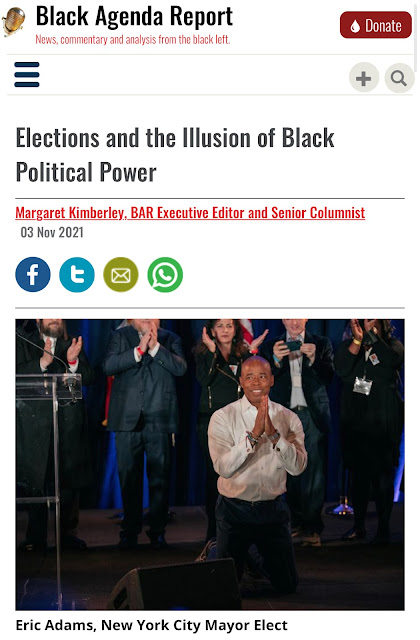Last week’s 2021 gubernatorial elections in New Jersey and Virginia gave us enough of a preview for what is likely to come with the midterm elections of 2022.
New Jersey and Virginia, which rank as the nation’s Nos. 11 and 12 most-populous states, shifted dramatically away from the incumbent White House party, the Democratic Party, and from the incumbent U.S. president Joe Biden.
The midterm elections of 2022 will highly likely become a wave toward the White House opposition party—the Republican Party.
At each of the levels of U.S. House, U.S. Senate, and U.S. Governors, the 2022 Democrats’s backs are electorally against the wall.
I will explain.
U.S. House
The Republicans, with the outcome of Election 2020, have 213 seats. It takes 218 for majority. They are just five [5] seats from winning over new majority. Not only that, percentage wise, that 213 of a required 218 amounts to 97 percent. Yes—the Republicans are 97 percent within reach.
U.S. Senate
With the results of Election 2020, it is a tie in the upper chamber of Congress. Republicans have 50 seats. They do not have majority given U.S. President is in the column for the Democrats and Joe Biden. That makes the tie-breaker vote cast by Democratic incumbent U.S. vice president Kamala Harris. One seat flipping Republican delivers the U.S. Senate to Team Red. Their current 50 of what would be an outright majority of 51 seats means they are 98 percent within reach.
U.S. Governors
The Republicans have current majority number with 27. The recent pickup of Virginia will make it 28 heading into the 2022 midterms. But, the electoral votes from the applicable 28 are slightly less than the 270 electoral votes required for the presidency. Republicans-held governorships, based on Election 2024 allocation of electoral votes, and counting their 2021 pickup of Virginia, comprise 265 of the required 270. This means they are 98 percent within reach with that level of electoral strength.
Looking at Past Examples
This reminds me of the 1980 Republican pickup of the presidency of the United States to Ronald Reagan and the 2008 Democratic pickup of the presidency of the United States to Barack Obama. Following the 1976 unseated Gerald Ford, the starting point for Reagan was a mathematical 241 electoral votes. (That is 89 percent of the required 270 electoral votes.) Following the 2004 losing nominee John Kerry, the starting point for Obama was a mathematical 252 electoral votes. (That is 93 percent of the required 270 electoral votes.)
The Republicans, heading into the midterm elections of 2022, have an even stronger advantage than 1980 Reagan and 2008 Obama. And the Democrats, as they are heading into the midterm elections of 2022, are reminding me of 1980 unseated Democratic incumbent U.S. president Jimmy Carter and of 2008 losing Republican nominee John McCain. The 2022 Democrats have little to no back support.
There is more to consider.…
Involved States: U.S. House
Approximately 53 to 54 percent of U.S. citizens lives in one of the Top 10 most-populous states in the nation. According to their current ranks, they are: California; Texas; Florida; New York; Pennsylvania; Illinois; Ohio; Georgia; North Carolina; and Michigan.
I recently looked over the last four midterm-elections cycles in which the U.S. House flipped to the White House opposition party. This counted two such cycles won over by the Republicans, on the watches of Democratic-affiliated U.S. presidents Bill Clinton and Barack Obama, in 1994 and 2010. This counted as well two cycles won over by the Democrats, on the watches of Republican-affiliated U.S. presidents George W. Bush and Donald Trump, in 2006 and 2018.
In each of those four midterm-elections cycles, no less than 7 of the nation’s Top 10 populous states contributed to flipping the U.S. House. In all four of those cycles, the nation’s Top 4 states were involved in flipping the U.S. House. California, Texas, Florida, and New York combine for nearly 1 for every 3 U.S. residents.
I have taken notice of electoral structures.
Dating back to the 1940s, when the White House opposition party flips the U.S. House they tend to win a net gain of an estimated +3.50 to +4 seats with each percentage point nationally shifted in their direction. A 10-point national shift would yield pickups of approximately +35 to +40 seats.
When it comes to involved states, the 1994, 2006, 2010, and 2018 cycles saw an average of approximately +1.75 to +2.00 net gains. The 1994 Republicans won a net gain of 54 seats from 31 states. (An average of +1.74 pickup seats from each involved state.) The 2006 Democrats won a net gain of 31 seats from 18 states. (An average of +1.72 pickup seats from each involved state.) The 2010 Republicans won a net gain of 63 seats from 33 states. (An average of +1.90 seats from each involved state.) The 2018 Democrats won a net gain of 40 seats from 21 states. (An average of +1.90 pickups from each involved state.)
The 2022 Republicans, to flip the U.S. House, need a national shift of +2 percentage points in their direction. Their 2020 U.S. Popular Vote was –3.12 percentage points. (Result: Democratic 50.81% vs. Republican 47.69%.) For involved states, the Republicans only need three states which, based on electoral structure, would deliver +5 or +6 pickups to reach a new majority for the U.S. House.
Wikipedia, with its report on the 2020 U.S. House elections, lists 37 Democratic-held U.S. House seats which were carried by +10 percentage points or less. Imagine if all were to flip from 2020 Democratic to 2022 Republican. Here is the math: 37 net gains in seats, divided by 10 percentage points, is an average of +3.70 net gains in seats with each percentage point nationally shifted [to the 2022 Republicans].
270toWin also lists those Democratic-held seats heading into 2022. I counted the number of involved states. Total is 21. This does not mean, when it all ends, that exact number is what will play out. There can be fewer states. Let’s say it ends up a total of
20. (An easy number.)
Here is the math: 20 involved states, multiplied by +1.75, equals a net gain of +35 seats; 20 involved states, multiplied by +2, equals a net gain of +40 seats. (Source:
Current House of Representatives Map (Heading Into Election 2022).)
The following map are involved states in which there are Democratic incumbents whose Election 2020 margins were +10 percentage points or less. The only Top 10 state not colored in blue is New York.
Potential States: U.S. Senate
If the 2022 Republicans end up flipping the U.S. Senate, they most highly likely will do so by starting with one particular state: New Hampshire.
Maggie Hassan’s 2016 Democratic pickup in New Hampshire was a narrow +0.14 percentage points while using presidential nominee Hillary Clinton narrowly carried the state by +0.36.
While the state’s governor, Chris Sununu, has not officially announced if he will run…if he does ends up running—and he does lead Hassan in matchup polls—Sununu would likely do so because he would win.
The following is the map of those potential states with Democratic-held U.S. Senate seats which may flip 2022 Republican. I use a color code to blend in yellow with the commonly recognized hues. Green is used for Democratic-held U.S. Senate seats which have the potential to flip Republican. Orange is used for Republican-held U.S. Senate seats which have the potential to flip Democratic. The point of including both possibilities is not because, say, five Democratic-held seats would flip Republican while five Republican-held seats would flip Democratic. It is to keep in mind, this far in advance, which states appear to be competitive. (I consider this to be a little early. We will need more polling.)
Vulnerable States: U.S. Governors
The 2018 U.S. Popular Vote for U.S. Governors was a percentage-points margin of Democratic +3.07. Which also means Republican –3.07. (Result: Democratic 50.37% vs. Republican 47.30%.)
My sense is that there are fewer than ten states indicating a 2018-to-2022 shift toward the Democrats. So, that would leave 26 or more states which will be shifting in the direction of the Republicans.
This will make it not feasible for the 2022 Democrats to hold the U.S. Popular Vote. Just getting it to a margin of Republican +0.01 would deliver to that party a net gain of +3 states. (They already flipped 2021 Virginia. I sense more will come.)
The midterm elections of 2018 saw the Democrats end up with six [6] of the Top 10 populous states’s governorships. A Republican wave would likely take their four to at least six. Republican pickups of Pennsylvania and Michigan, which are leading bellwether states nowadays with No. 21-ranked Wisconsin, would move their four to six of the Top 10.
The Rust Belt Trio each have Democratic incumbent governors. Pennsylvania’s Tom Wolfe is term-limited. Michigan’s Gretchen Whitmer and Wisconsin’s Tony Evers—both were 2018 Democratic pickup winners on the watch of Republican incumbent U.S. president Donald Trump—would become unseated. It would not surprise me if all three states flip. And, if that happens, it would move the 2022 Republicans to 31 states. That is…if Arizona and/or Georgia and/or Maryland—each with the potential to go against the national tide and shift Democratic—don’t flip from 2018 Republican to 2022 Democratic. If that happens, the U.S. Popular Vote for 2022 ends up the same as it was in 2018. That would lead me to anticipate three more states flipping Republican just to get a national margin to at least +0.01. Likely their additional pickups would be Kansas and two of the following three: Maine, Nevada, and New Mexico.
The following map uses similar color-coding as they appear with U.S. Senate. For U.S. Governors, I colored in Virginia light red because its 2021 outcome was a Republican pickup. Those states in green, currently in the Democratic column, are vulnerable to flipping Republican. Those states in orange, currently in the Republican column, are vulnerable to flipping Democratic. If all of them were to switch party occupancy, the 2022 Republicans would end up with a total of 33 U.S. Governors.








